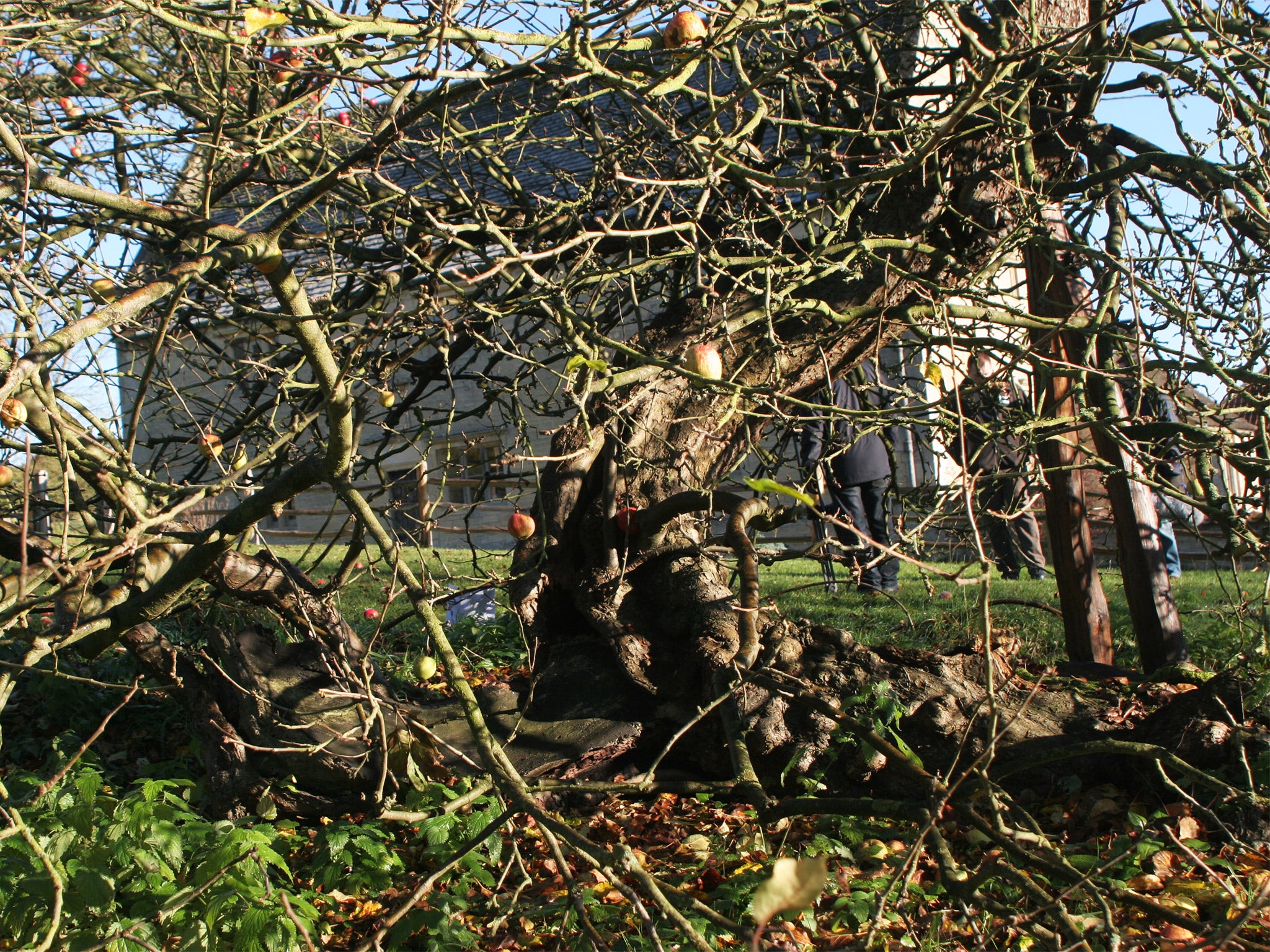Campaign launched to protect trees located where historical events took place
As it seems unlikely that the country’s constitution will ever be rewritten under the shade of a yew, it’s vital that we revere the trees that provided the living backdrop to history – and keep them standing for future generations

From the signing of the Magna Carta in 1215 to Isaac Newton’s apple-dropping eureka moment, some of Britain’s most important historical events have taken place not within the confines of bricks and mortar, but surrounded by the boughs and bark of trees.
But these living, breathing monuments have, unlike historical buildings, no formal plaques or listing status to protect them. Now the Woodland Trust is looking to change this with a campaign for a legally binding National Tree Register to protect ancient trees against destruction and development.
The Woodland Trust, in partnership with Country Living magazine, insists that a national tree register will help recognise, celebrate and protect the UK’s Very Important Trees, and help their owners, such as local authorities and private landowners, to access support such as specialist advice and grants. The National Trust has also been dedicating manpower to a branch-and-root survey of the nation’s oldest trees. It has conducted a five-year study recording 40,000 ancient and notable trees across 190 of its properties. What makes a tree notable? Unusual age and interesting tales.
And if some of these trees could talk, their tales would be spellbinding. The Ankerwycke yew tree in Runnymede, Surrey, with its twisted roots and branches, is believed to be about 2,500 years old and widely reported to have been in sight of King John’s (forced) signing of the Magna Carta in 1215, which laid down civil liberties for the people of England.
“It was common in those days for important meetings to take place under prominent trees because there were no town halls,” explains Brian Muelaner, the National Trust’s ancient tree advisor, and the man in charge of the survey. “One of the signers of the Magna Carta lived at Ankerwyck, and this particular tree is the only one left standing from that time period.”
A few centuries later, the Ankerwycke tree gazed down upon a different King, Henry VIII, courting his future wife Anne Boleyn. While the future queen was for the chop, the Ankerwycke tree continues to thrive. While there’s no green plaque devoted to its past, it’s celebrated with a variety of offerings and tributes left by people, from ribbons to personal notes scribbled on bits of paper.
The purpose of the survey, carried out by around 700 National Trust staff, is to record the specifics of trees such as this, taking down the species, location, girth and condition, as well as raising awareness of their wonderful stories and individual characteristics. Like the Ankerwycke tree, some have already gained a flavour of fame, such as the Maid of Kent apple tree at Woolsthorpe Manor in Lincolnshire, which is thought to have inspired Sir Isaac Newton’s theories on gravity.
“Sadly, a hollowed part of the trunk of that tree lying on the ground was filled with concrete in the 1960s, and a little gap between the concrete and wood has left space for organisms to grow, causing rot. The difficulty is that the tree has adjusted to the concrete, so if we take it out, the branch could snap in a high wind,” explains Phil Scott, a forestry adviser who cares for the tree.
Under the Tolpuddle Martyrs’ sycamore tree in Dorset, six farm labourers secretly met in the 1830s to discuss poor pay and work conditions. The uprising that they started led to the formation of the first trade union, but they were condemned for their actions and sent to Australia. Their tree survives on their – and its – home turf.
Other trees have come to prominence for their engravings. “Along the south and east coast there are some with poignant messages from soldiers heading off to fight in D-Day during the Second World War,” says Muelaner. “These could have been their last marks on earth.”
The National Trust hopes that stories like these will encourage greater protection of Britain’s ancient trees. “Across Europe, from France to Bulgaria, they have identification and recognition of their trees. All we have are Tree Preservation Orders (TPOs), which members of the public can apply for to protect a particular tree, but owners of the land where the tree stands could still knock it down and simply pay a fine,” warns Muelaner.
“We have managed to record about 30,000 trees already, some of which we knew about, others we discovered for the first time, including oak trees dating back to the time of William the Conqueror with girths over 10 metres. We’ve recorded their condition, but also want to do the most we can for them so that they last another thousand years,” concludes Muelaner.
As it seems unlikely that the country’s constitution will ever be rewritten under the shade of a yew, it’s vital that we revere the trees that provided the living backdrop to history – and keep them standing for future generations.
Join our commenting forum
Join thought-provoking conversations, follow other Independent readers and see their replies
Comments